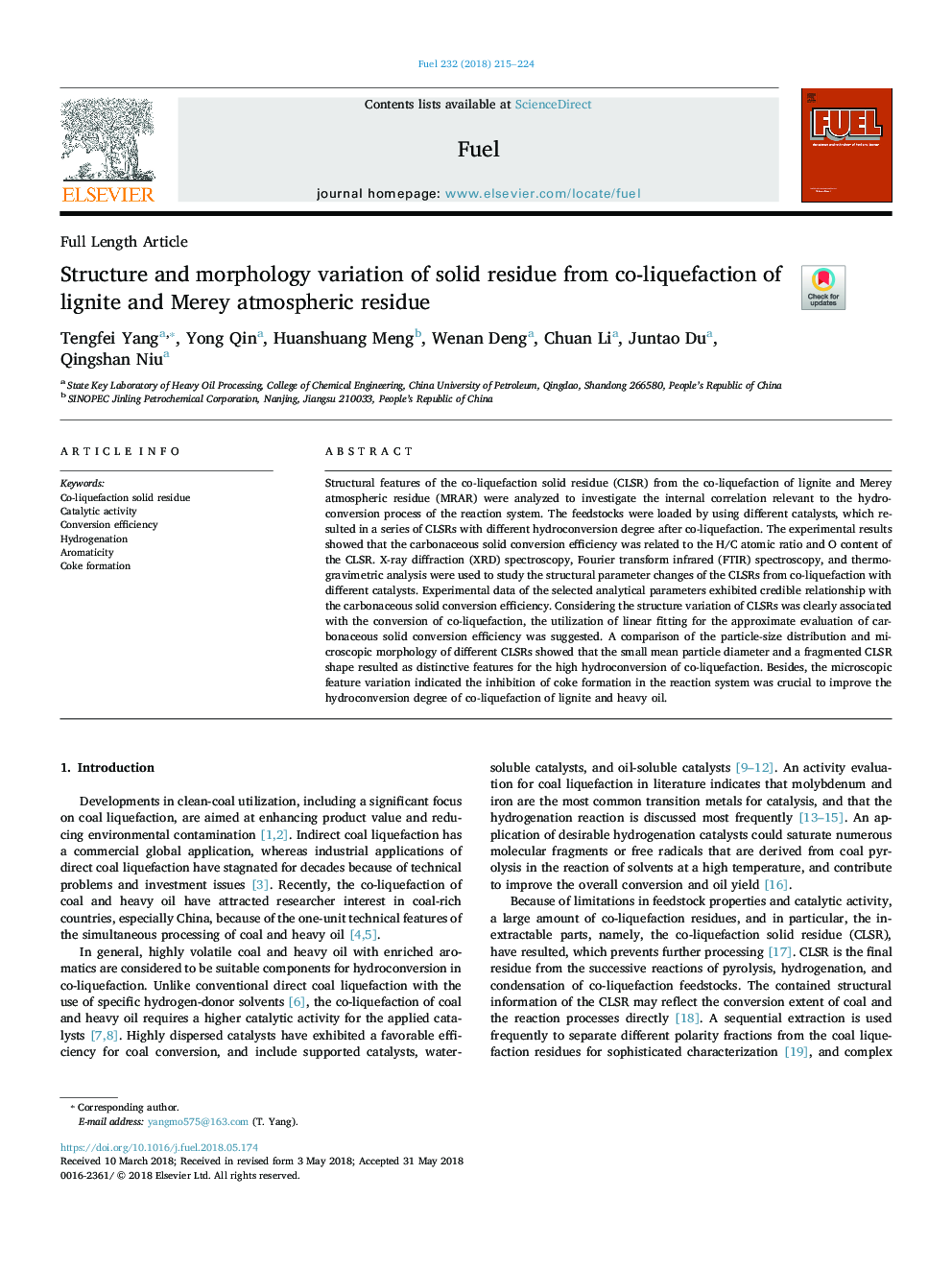| Article ID | Journal | Published Year | Pages | File Type |
|---|---|---|---|---|
| 6630378 | Fuel | 2018 | 10 Pages |
Abstract
Structural features of the co-liquefaction solid residue (CLSR) from the co-liquefaction of lignite and Merey atmospheric residue (MRAR) were analyzed to investigate the internal correlation relevant to the hydroconversion process of the reaction system. The feedstocks were loaded by using different catalysts, which resulted in a series of CLSRs with different hydroconversion degree after co-liquefaction. The experimental results showed that the carbonaceous solid conversion efficiency was related to the H/C atomic ratio and O content of the CLSR. X-ray diffraction (XRD) spectroscopy, Fourier transform infrared (FTIR) spectroscopy, and thermogravimetric analysis were used to study the structural parameter changes of the CLSRs from co-liquefaction with different catalysts. Experimental data of the selected analytical parameters exhibited credible relationship with the carbonaceous solid conversion efficiency. Considering the structure variation of CLSRs was clearly associated with the conversion of co-liquefaction, the utilization of linear fitting for the approximate evaluation of carbonaceous solid conversion efficiency was suggested. A comparison of the particle-size distribution and microscopic morphology of different CLSRs showed that the small mean particle diameter and a fragmented CLSR shape resulted as distinctive features for the high hydroconversion of co-liquefaction. Besides, the microscopic feature variation indicated the inhibition of coke formation in the reaction system was crucial to improve the hydroconversion degree of co-liquefaction of lignite and heavy oil.
Related Topics
Physical Sciences and Engineering
Chemical Engineering
Chemical Engineering (General)
Authors
Tengfei Yang, Yong Qin, Huanshuang Meng, Wenan Deng, Chuan Li, Juntao Du, Qingshan Niu,
